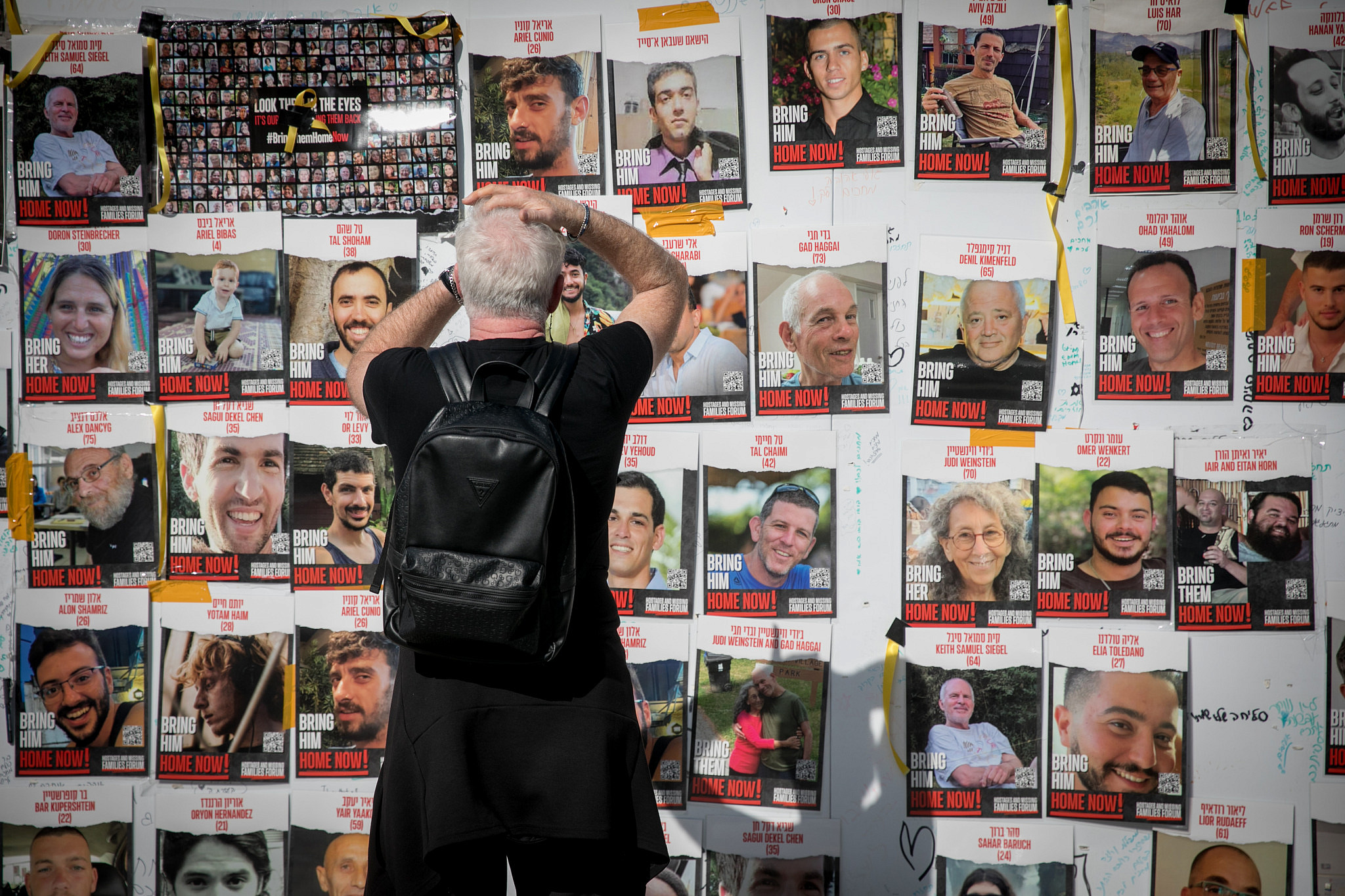The IDF Spokesperson’s announcement on Friday that Israeli soldiers in the Gaza Strip had “mistakenly shot dead” three Israeli hostages, who had been abducted by Hamas during its October 7 assault, has shocked Israeli society. Despite reportedly removing their shirts and holding up a white cloth to signal surrender, the soldiers deemed the hostages — one of whom was a Bedouin citizen — threats and fired at them. Herzl Halevi, the IDF Chief of Staff, took personal responsibility for the incident, adding: “There is nothing IDF soldiers and commanders in the Gaza Strip want more than to rescue hostages alive. In this case, we failed to do so.”
Halevi’s sentiment, however, does not always appear to have been put into practice. A new investigation by +972 Magazine and Local Call suggests that, since the beginning of the Gaza war, the Israeli leadership has relegated the goal of ensuring the hostages’ safety in favor of larger military and political goals in the occupied territory — a fact that has not only stoked anger and discontent from hostages’ families, but seems to have been pursued despite concerns from soldiers, especially during the first few weeks of the operation.
Intelligence sources who spoke to +972 and Local Call on the condition of anonymity, before the shooting of the three abductees on Friday, affirmed that during the initial stages of the war, the Israeli army’s intense bombardment of Gaza was conducted without having a clear picture of where many of the more than 240 hostages were being held. The relentless airstrikes — which have so far killed more than 18,700 Palestinians, displaced the vast majority of Gaza’s population, and decimated large swathes of the besieged Strip — also continued despite concerns that the bombings might endanger the lives of the hostages, according to the sources.
Echoing this sense of an indiscriminate and haphazard policy, testimonies from newly freed Israeli hostages, who were released as part of exchange deals for Palestinian prisoners during a temporary ceasefire in late November, as well as from some of the hostages’ families, indicate that one of the main fears of those held captive in Gaza was the threat of being hit by Israeli airstrikes and shelling. Many of the hostages, according to these testimonies, were held above ground rather than in tunnels, and were therefore particularly vulnerable to such attacks.
Referring to the first weeks of Israel’s onslaught, one intelligence source told +972 and Local Call that “the IDF shelled extensively, destroying half of Gaza, while having little intelligence.” The source emphasized that the army “would not have killed hostages deliberately if they knew they were in a certain building,” but that it nonetheless carried out thousands of strikes knowing full well that hostages might be also harmed, especially at a time when “there were many hostages held in private apartments [above ground].”
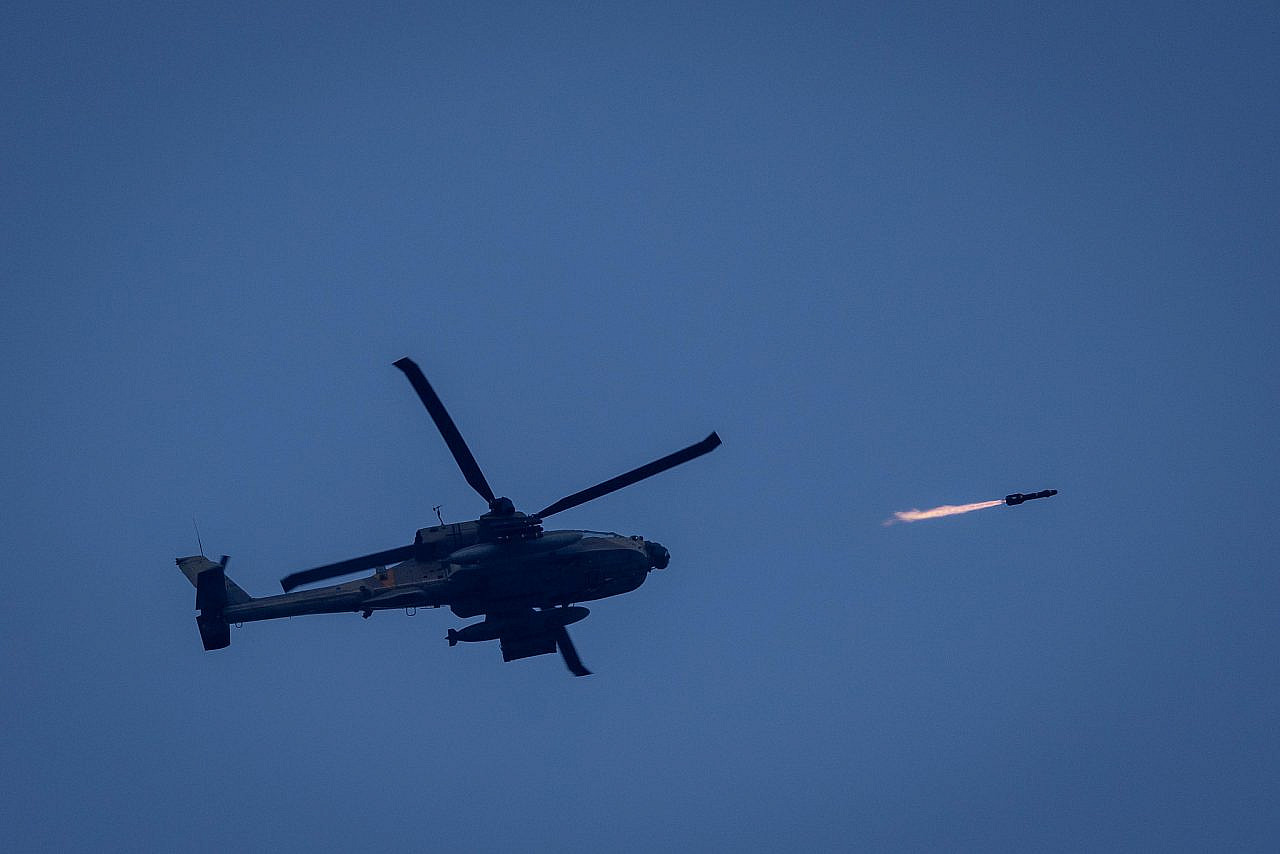
This account is consistent with what some of the released hostages have said upon their return. Noam Dan, three of whose relatives were kidnapped on October 7 — and two of whom have since been freed — told +972 and Local Call that as soon as the first captives were released, the families discovered that much of what Israeli politicians had told them about the hostages’ whereabouts was untrue.
“At first, government officials made it clear to us that the hostages were in tunnels, and therefore the army’s bombings won’t hit them,” she said. “When the hostages were released, we realized that many of them were above ground, in people’s homes. The government kept telling us that they knew where they were, that they wouldn’t do anything that would endanger them, that everything was under control. But once the abductees got out of there, these things turned out to be false. Everything we thought [was true] collapsed.”
Dan added that, from conversations she had with freed hostages, she learned that their primary fear was being killed or wounded by the Israeli army’s attacks — a feeling echoed by other captives released in recent weeks. She also said that there was evidence of hostages being hit by Israel’s bombing in Gaza.
Two intelligence sources also said they now have concrete evidence that some female Israeli hostages were sexually assaulted by their Hamas captors while in captivity, corroborating testimonies published by the Hostages and Missing Families Forum and elsewhere. The sources said that some are still in danger of sexual abuse, and that the window of opportunity to release them is getting smaller.
Intelligence sources further told +972 and Local Call that they believe that only public pressure for another deal with Hamas will bring about the release of all the remaining hostages — pressure that has been mounting in recent days, including with a large protest held in Tel Aviv Saturday evening. The sources said they felt the issue had been “let go” by Israel’s political leaders, and for this reason, it was important to share their information for this article.
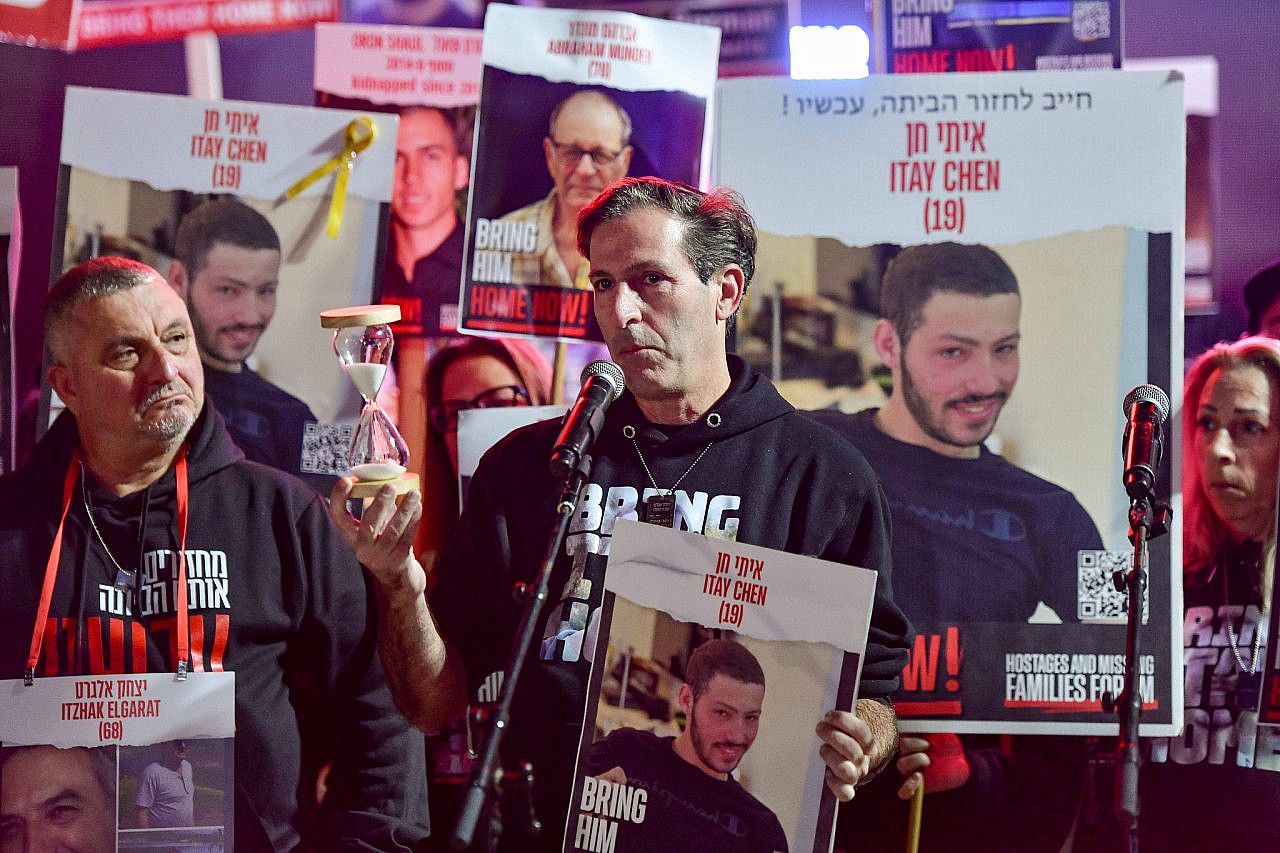
“It’s very hard for me that there is no goal, and no political vision of what will happen the day after the war,” one of the sources said. “There is no strategic plan. There are endless, bombastic, motivational statements about toppling Hamas and how we’ll drink a mojito on the beach in Gaza next year. Statements without logic backed by a lot of irrational commanders, who are still acting to carry out revenge.
“When the military objective is so vague, I feel that I am here for only one reason: to try to press for a political agreement and a prisoner exchange,” the source continued. “This is more important than anything.”
‘There’s nothing we can do — we have to win the war’
On Nov. 30, +972 and Local Call published a detailed investigation revealing that the Israeli army has greatly expanded its bombing of non-military targets in Gaza compared to previous assaults on the besieged Strip, and that it is using artificial intelligence to generate more potential targets than ever before. The exposé also revealed that the army has loosened the constraints on expected civilian casualties from its airstrikes, including knowingly killing hundreds of Palestinian civilians while trying to assassinate one senior Hamas figure.
These policies — which have contributed to perhaps the deadliest and most destructive military campaign against Palestinians since the Nakba — also put the lives of the Israeli hostages in danger, according to the intelligence sources who spoke to +972 and Local Call for this new investigation.
The sources said that the Israeli military is today taking more precautions with regard to avoiding harm to hostages than it was at the beginning of the war, partly because the intelligence picture has become significantly clearer. However, some of the sources said that “mistakes still happen,” and that they have evidence from the past month that hostages may have been hit by Israeli airstrikes.
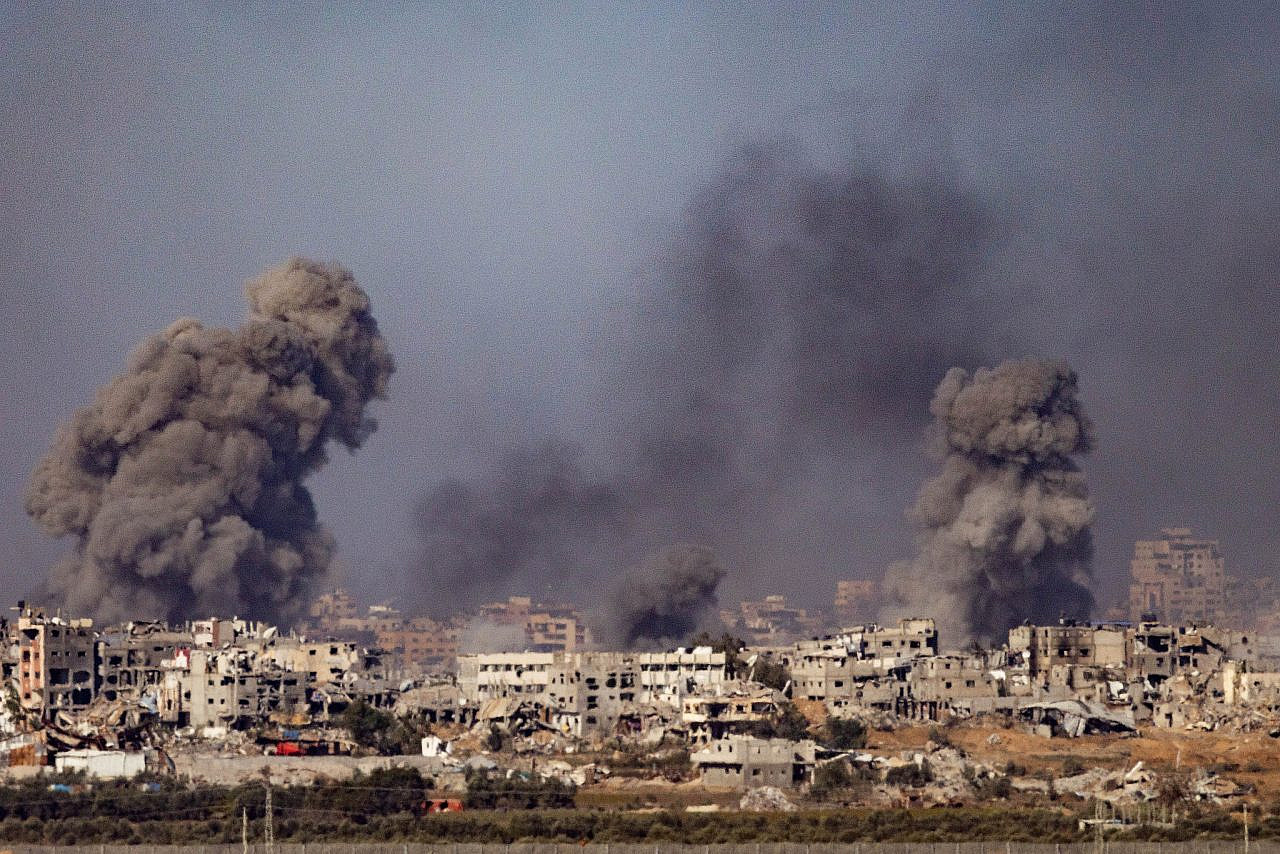
One source explained that, shortly after the Hamas-led massacres of October 7, which killed over 1,100 people in southern Israel, there was a sense that “the lives of the hostages were a price that people in the army, especially senior commanders, were willing to pay.”
The source continued: “My feeling is that [the army and political top brass] knew they were going to be forced to resign at the end of the war, and they wanted to present military achievements, among other things, as a way to protect themselves. We were told that even if Hamas executed one hostage every day, we would not stop bombing. I hoped that the [Israeli] public would protest. [I knew] if there was no public pressure for a prisoner deal, the abductees would die. After a few weeks, Israeli [public] and U.S. pressure to advance a deal caused the [military’s] attitude toward the abductees to change.”
“At the start, it was constantly stated that the goal was to win the war and eradicate Hamas, not to bring back the hostages, and that there’s nothing we can do about it,” said a different intelligence source. “I saw that this bothered a lot of people [in the intelligence community], but they were in a stressful situation — an earthquake that began on October 7 and never ended. So soldiers were critical of the army, but they also saw how bad Hamas is, and they thought, ‘There’s nothing we can do about it — we have to win the war.’”
Another source told +972 and Local Call that the Israeli army tried to avoid killing hostages, but the emphasis at first was placed on military goals. “In the first two or three weeks, we didn’t have enough intelligence about the hostages, and they were not the top priority,” the source said. “We didn’t start the day with an update on the status of the hostages. It wasn’t our top priority then — and the truth is, they aren’t today either. Unfortunately, I don’t think the army can [free the hostages through rescue operations]. I don’t think we will be able to release hostages without a deal.”
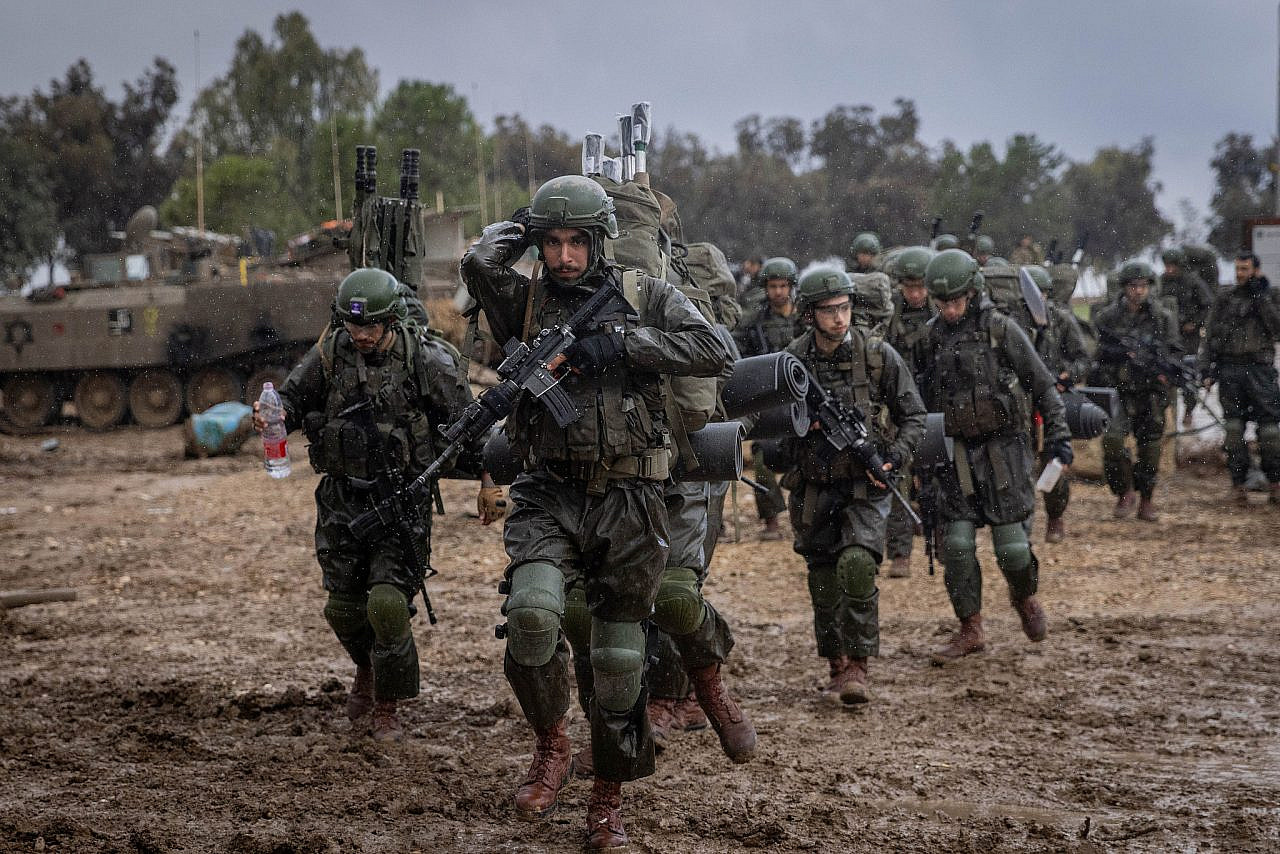
One of the sources referred to a quote by Tzachi Hanegbi, the head of Israel’s National Security Council, a week after the Hamas attack, that there would be no negotiations with Hamas for the release of the hostages, because “we have no way of negotiating with an enemy that we swore to wipe off the face of the earth.” The source said that this statement reflected well the atmosphere that prevailed in the first weeks of the war, until public pressure mounted to advance a deal with Hamas.
Notably, during those early stages of the operation, the Israeli government reportedly rejected proposals to release some hostages in exchange for a temporary ceasefire — a deal that was eventually agreed to in late November.
“We recently reduced the number of bombings in Gaza because there is not much left to bomb,” another source explained. “The army is very busy today with the question of how not to kill the hostages; this is a central issue now in the war. They try not to bomb them, but it can happen accidentally, and it has happened accidentally in the past.”
The source also detailed how even Israel’s strikes on known Hamas leaders can endanger the lives of hostages. “One of the things that is not discussed by the Israeli public is that there are female hostages held next to senior Hamas figures all the time. They’re using them as human shields. So to try to kill the senior Hamas figures is to know that you will sacrifice a female hostage.”
These comments seem to be in line with what Hanegbi said in another interview last week: “If we receive information about [Hamas leader Yahya] Sinwar’s location, and we know that he is surrounded by Israeli hostages, it will be a heartbreaking dilemma … In the end, we will have to make a decision.”
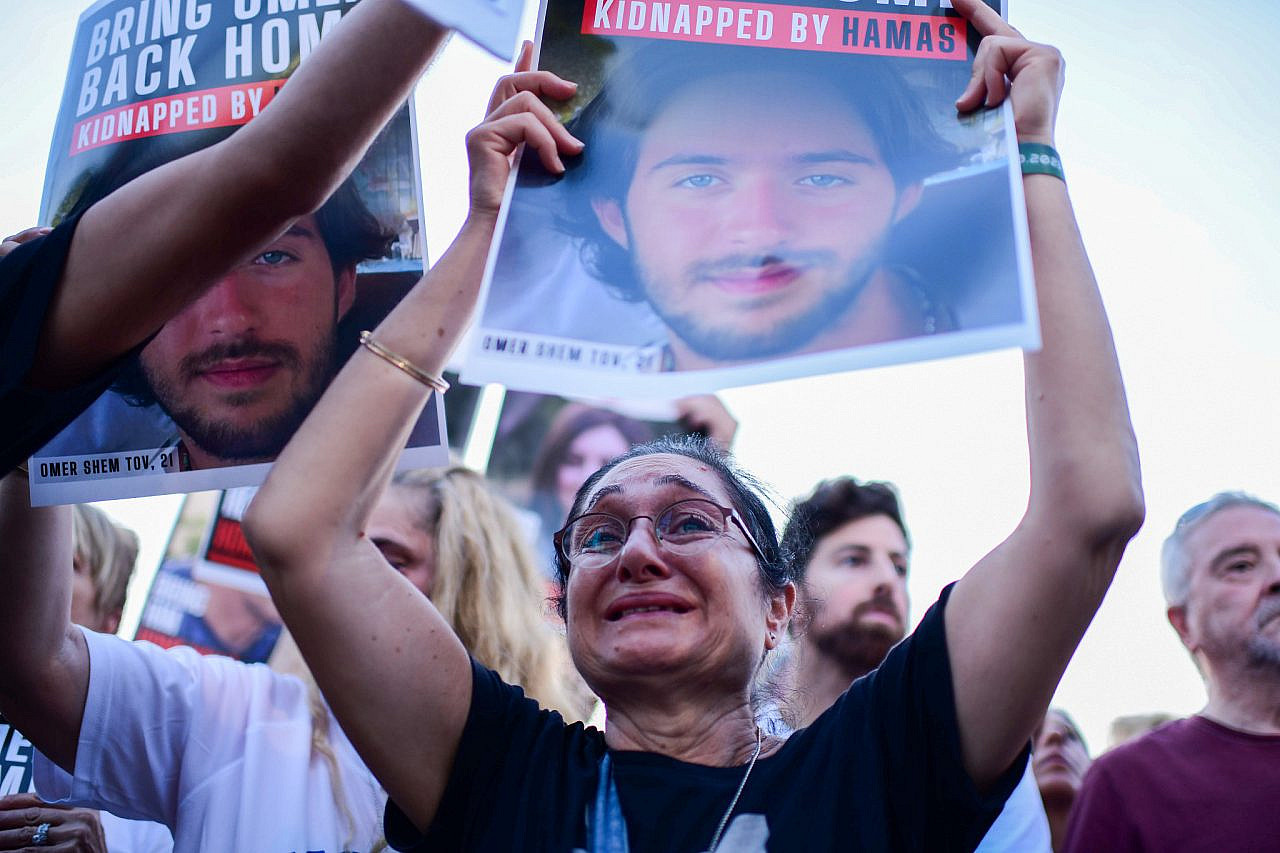
Other intelligence sources disagreed with the aforementioned testimonies, telling +972 and Local Call that the hostages had been the military’s top priority from the very beginning. “We were never told that it is permissible to endanger hostages in order to eradicate Hamas,” one source said. “From the first moment, we invested the same amount of resources to advance both goals simultaneously.”
One of the sources said that extensive attacks that endangered hostages had indeed been carried out at the start, but that “there was no choice” because a forceful response had to be made after the October 7 attacks.
‘I was afraid of IDF shelling more than of Hamas’
The sources’ testimonies are consistent with statements made by released Israeli hostages and their families during a heated meeting with the Israeli war cabinet, headed by Prime Minister Benjamin Netanyahu, on Dec. 4.
“I see you’re bombing there, and you have no idea where the hostages are,” one of the freed hostages said, according to leaked recordings from the meeting. “I was at a house when there were bombings all around. I know a family that miraculously survived after a shell hit the house [they were being held in]. We sat in the tunnels and we were terrified that it wouldn’t be Hamas but Israel that would kill us.
“You put politics above the return of the hostages,” the freed hostage continued. “My husband [another hostage] beat himself because it was so hard for him, and you’re just thinking about toppling Hamas. I saw a hostage die next to me.”
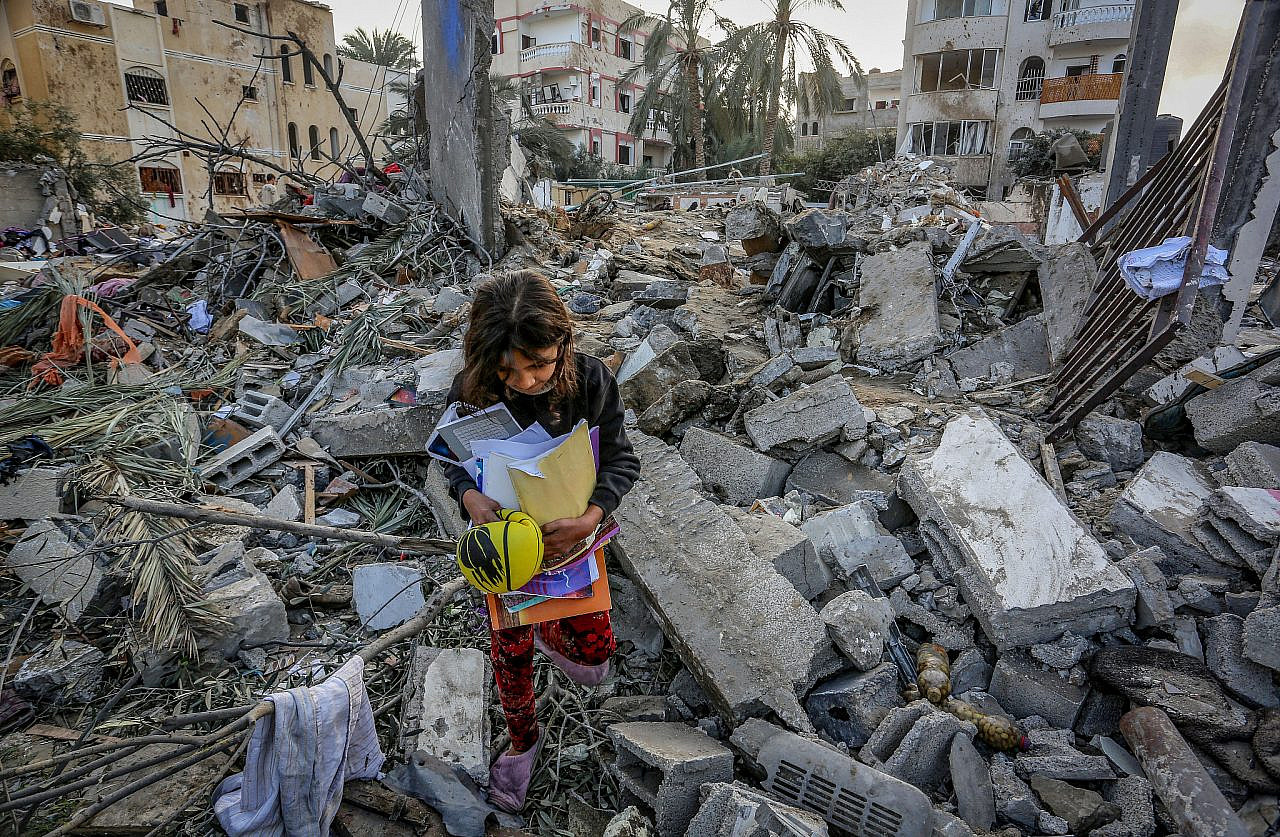
According to the recordings, another hostage, who was released with her children but whose husband remains captive, said that “the feeling we had there was that no one was doing anything for us. The fact is that I was in a hiding place that was shelled, and we had to be smuggled out wounded. You claim there is intelligence, but the fact is that we are being bombed.”
An elderly woman from Kibbutz Kfar Aza, one of the communities targeted by Hamas on October 7, described in the meeting how, on one occasion in captivity in Gaza, a closet fell on them from the blast of a bomb. “I thought I was going to be blown up any second,” she said. “I told myself I couldn’t understand how Israel wanted to blow us up.”
Another abductee released in the hostage-prisoner exchange — an elderly woman from Kibbutz Be’eri, where at least 89 of the small community’s residents were killed and 24 were kidnapped to Gaza during Hamas’ October 7 attacks — told the war cabinet that during her time in captivity, “I was afraid of IDF shelling more than I was afraid of Hamas.”
Meirav Raviv — four of whose family members, including 9-year-old Ohad Munder, were kidnapped to Gaza, and three of whom were released — echoed this sentiment to +972 and Local Call: “The thing that scared them the most is the shelling by the IDF,” she said. “There’s no bomb shelter. There’s no siren. No alarm. It happens suddenly. And they are scared to death. They heard [bombing] all the time. They were also scared that there would be some heroic [rescue] operation, and they would be killed.”
Filmmaker Hagai Levy met eight of the abductees upon their return. Writing on his Facebook page, he said that for most of them, the most horrifying trauma of captivity was the Israeli bombing, especially among those held in homes above ground.
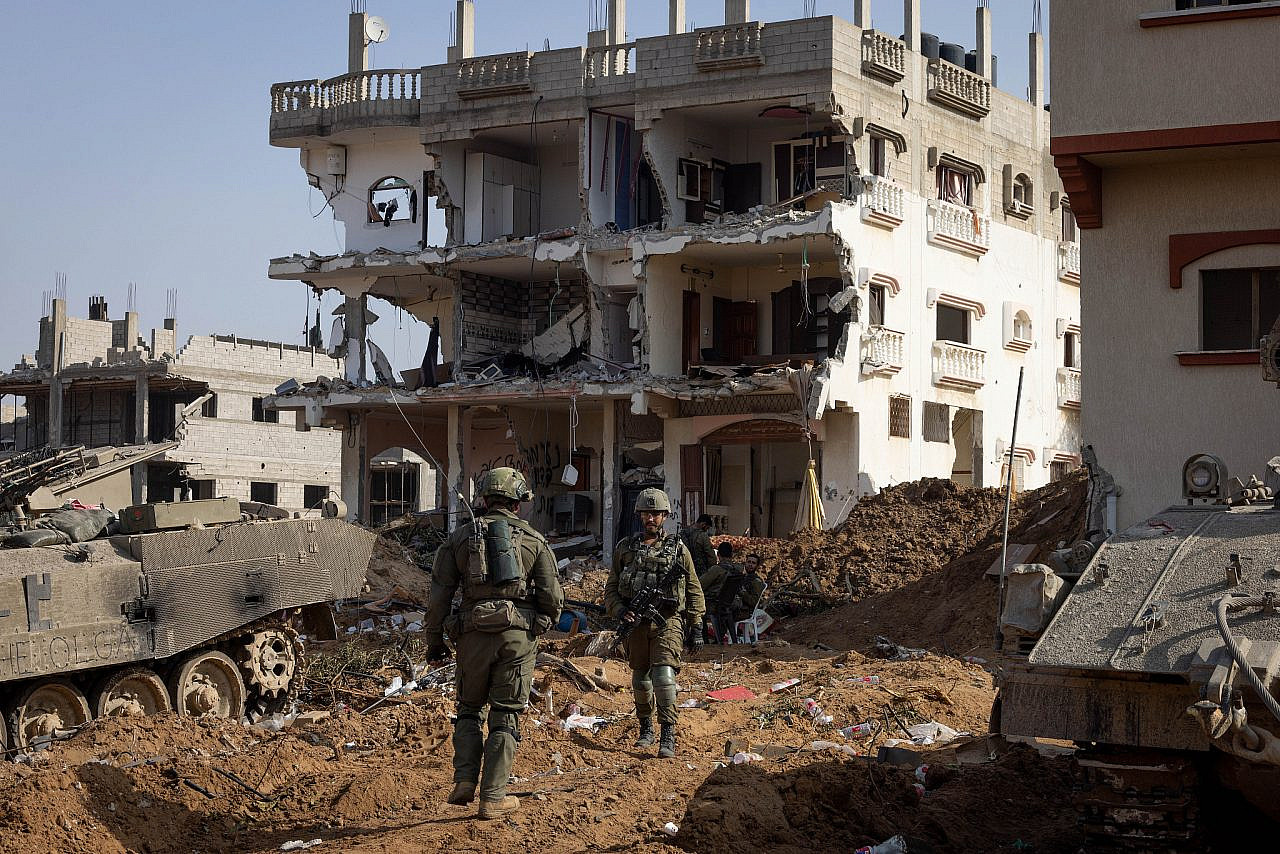
“When they talk about the bombing, they literally shake in front of me,” he wrote. “The terms they use are ‘hell,’ [and] ‘being on the verge of death.’ The fear of being murdered by their captors was negligible compared to the fear of dying in a bombing. The very thought that the one who is supposed to save you is the one who might kill you intensifies the trauma.”
Levy interviewed the freed hostages for video testimonies commissioned by the Hostages and Missing Families Forum — the body coordinating the families’ national and international campaigns to free their loved ones. In these videos, which the Forum edited, most of the clips in which the abductees talk about Israeli bombing were shelved. (The Forum had not responded to +972’s queries on this matter by the time of publication; any response will be added to this article if and when it is received.)
Levy believes it is a short-sighted mistake to cut those testimonies.
“The clear and immediate danger to the lives of the abductees is currently posed by IDF actions,” he wrote in another Facebook post. “The Hostages and Missing Families Forum must depart from its appeasement of the mainstream and its conformity, shout and scream and demand an immediate ceasefire and an immediate resumption of negotiations.”
Roni Krivoi, an Israeli with Russian citizenship who worked as a soundman at the Supernova music festival that was attacked on October 7, was kidnapped and released by Hamas as a “tribute” to Russian President Vladimir Putin. After his release, Krivoi’s aunt told Israeli media that he was held in a building that collapsed after being bombed by the army, and that he managed to escape. For four days, she said, he wandered alone in Gaza until he was caught by residents who returned him to his captors.
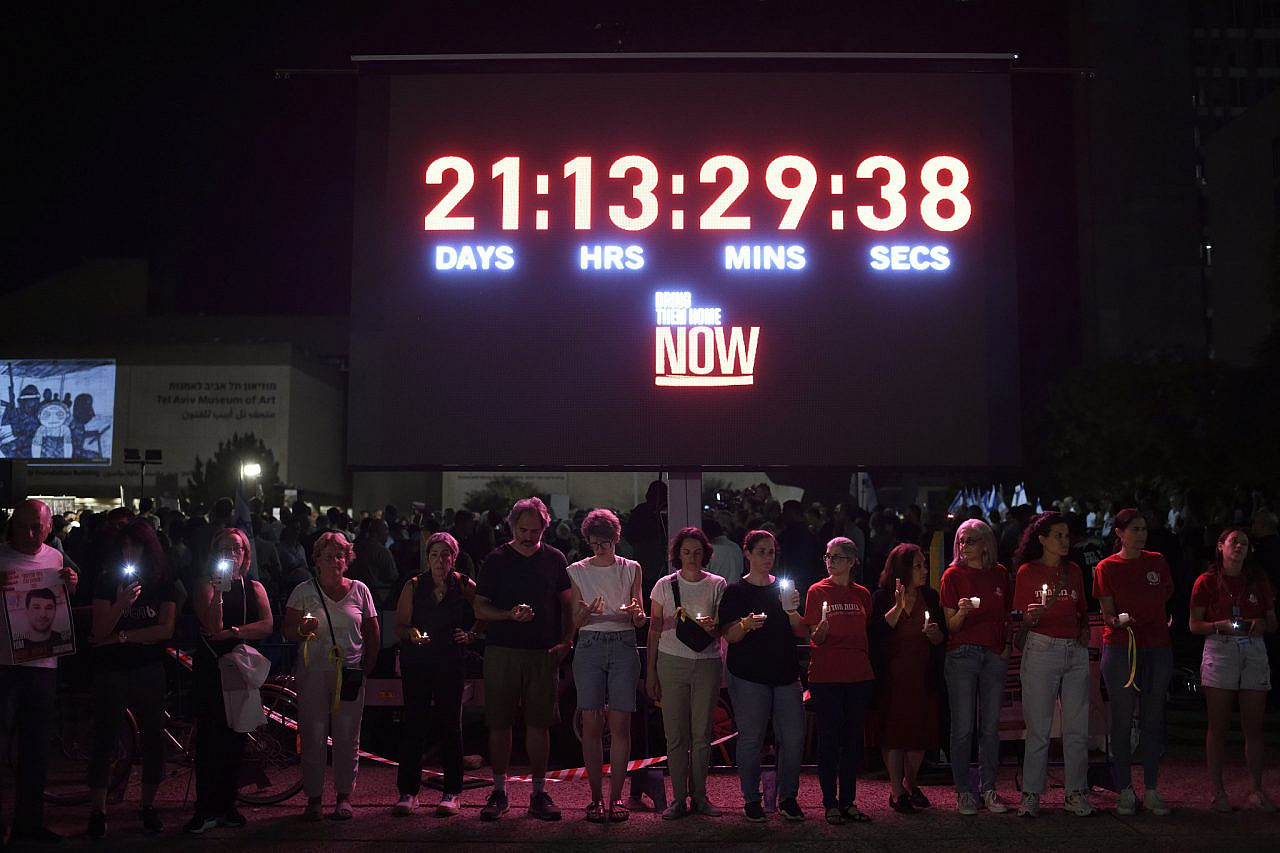
Intelligence sources told +972 and Local Call that they feel a sense of growing urgency over the fate of the Israeli hostages, because the situation of some of the captives is extremely difficult. “It really depends on which kidnapper abducted you,” one of the sources said. “Some got food, some didn’t. There are those who have been treated by a doctor, and some who have not.”
During the tense war cabinet meeting, some of the released hostages and the families of those still captive demanded that Netanyahu advance a deal with Hamas and place the issue at the top of his priorities. Netanyahu told the families that there is currently no political possibility of advancing an “all for all” deal — the release of all hostages in exchange for the release of all Palestinian political prisoners — in part because such a scenario would enable the survival of Hamas’ rule over Gaza.
Netanyahu also claimed that it was only thanks to Israeli military pressure and ground maneuvers that it was possible to release hostages over the past weeks, and that “continued maneuvering is the key to returning the rest of the abductees.” But many of the hostages’ families, as well as the intelligence sources we spoke to, doubt this statement.
“All the time, it’s this slogan of force, and force will be answered with force. We see that it doesn’t help, that it only results in more soldiers being killed,” Raviv said. “They wanted military pressure, they used pressure, and it didn’t help. And I am almost certain — although they deny this in the government — that they could have negotiated the release of the women and children even before the ground incursion.
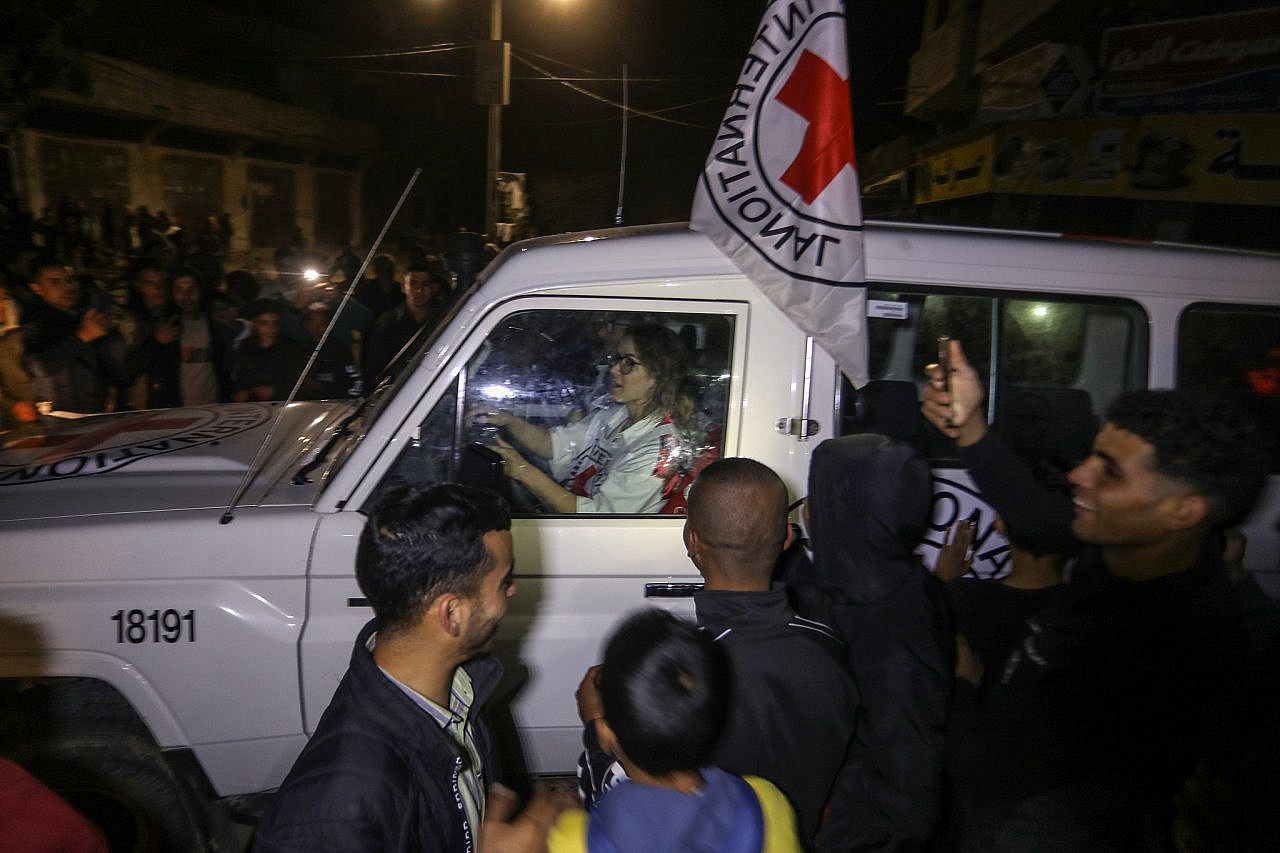
“I want this issue to be their top priority,” Raviv continued. “At first, it just wasn’t. We had to meet with [Israeli government ministers] in order to convince them. I met with the Spanish foreign minister, the Canadian prime minister, and with senators and members of the U.S. Congress, long before the [Israeli ministers] met with us here in Israel.”
‘What are you waiting for?’
So far, only one hostage has been freed alive during a rescue operation since the beginning of the fighting: the 19-year-old soldier Uri Magidish. Several other hostages, as well as soldiers, have been killed during similar operations in recent weeks. One intelligence source summed it up bluntly: “Military rescue operations endanger the hostages.” The killing of three hostages by Israeli soldiers on Friday only exemplified this further.
According to the Israeli army, there are currently 127 hostages still being held in the Gaza Strip. Most of the remaining hostages are men, including eight Thai nationals, one Tanzanian, and one Nepali. There are also thought to be at least 17 women among the captives, as well as several men over the age of 75, and two children.
Previous army statements further said that 28 Israelis were either murdered in Hamas captivity or killed on October 7, and their bodies are still being held by the group. Hamas, for its part, has claimed in various videos and statements published on its Telegram channel since October 7 that seven abductees were killed in attacks by the Israeli army. Israel vehemently denies these allegations and has derided them as psychological warfare.
According to Hamas, three members of the Bibas family — 32-year-old Shiri and her two children, 10-month-old Kfir and 4-year-old Ariel — were killed in Israeli attacks. On Nov. 30, Hamas released a video showing the hostage Yarden Bibas, the children’s father and Shiri’s husband, saying he has been told that his wife and children were killed by Israeli bombing and asking the government to return their bodies to Israel.
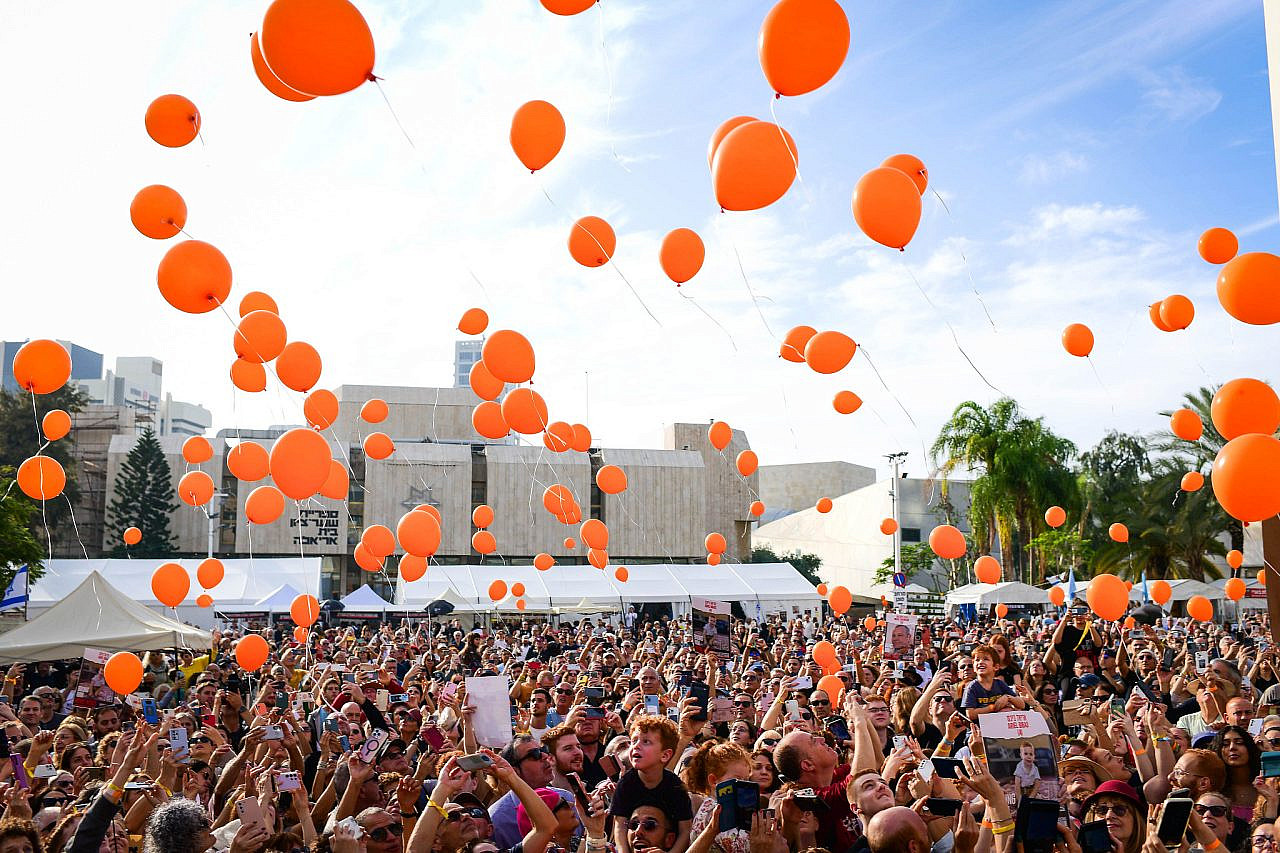
Hamas also alleged that the 19-year-old soldier Tamir Nimrodi was killed by Israeli bombing on Oct. 9. The three members of the Bibas family and Tamir Nimrodi are still listed by the army as missing and not murdered.
On Nov. 13, Hamas released a video claiming that the 19-year-old Israeli soldier Noa Marciano had been killed in a bombing attack by the Israeli army. Six days later, the IDF Spokesperson issued an unusual statement asserting that Marciano had been abducted to a house near Al-Shifa Hospital in Gaza City, and that “during IDF attacks in the area the Hamas terrorist who was holding her was killed, and Noa was wounded.” This is the only case in which the IDF Spokesperson publicly stated that an Israeli airstrike hit a hostage.
According to the IDF Spokesperson, an autopsy of Marciano’s body showed that the wound from the Israeli strike did not kill her or endanger her life, and Hamas later murdered her inside the hospital.
The sixth hostage that Hamas alleges was killed in Israeli attacks is Aryeh Zalmanovitch, an 85-year-old abductee from Kibbutz Nir Oz and the oldest of all the hostages. Zalmanovich had diabetes, heart and kidney disease, and needed medication to regulate blood pressure and a special diet. Other abductees from Nir Oz, who were released from captivity, said that Zalmanovich died next to them.
His son Boaz said that according to testimonies from released hostages, his father “did not receive the medicine and food he needed” in captivity, so as far as he was concerned, Zalmanovich was murdered by Hamas. Hamas claimed in its video that Zalmanovich died from panic due to Israeli bombing.
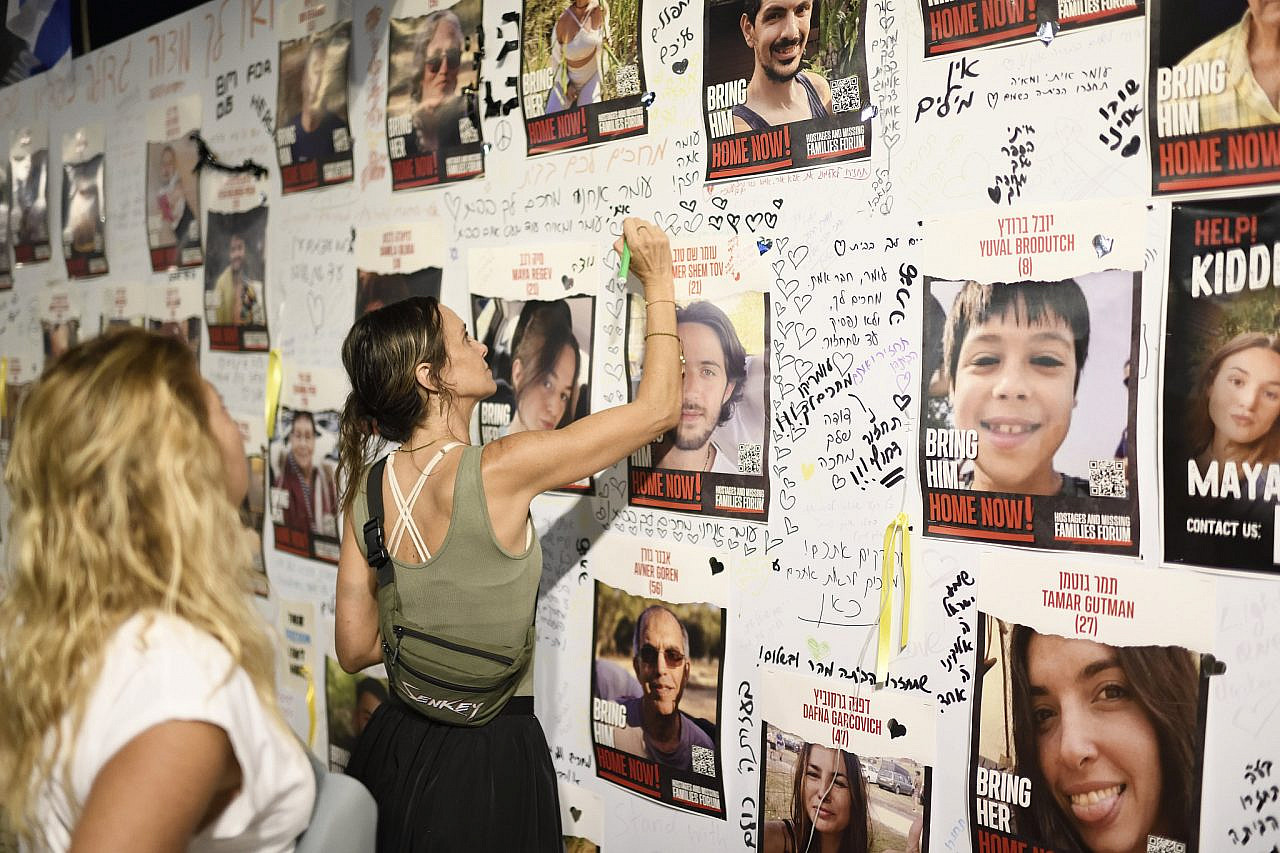
Finally, on Dec. 9, Hamas claimed that Sahar Baruch, a 25-year-old civilian from Be’eri, had been killed during an attempted rescue operation and that Israeli soldiers were also killed during the rescue attempt. The army said two soldiers were seriously injured during a failed rescue attempt, but denied that the operation was intended to rescue Baruch. Be’eri announced the next day that Baruch had been murdered in Hamas captivity. Sahar’s aunt said they “don’t really know how it happened,” and that the report they received from the military “has no details.”
Holding civilians hostage, including women, children, and the elderly, is illegal under international law. The status of the remaining Israeli hostages is unknown, with Hamas refusing to allow the Red Cross to visit them. Israel has similarly refused to allow the Red Cross to visit the thousands of Palestinians it has arrested since October 7, according to prisoners’ rights groups, both in Gaza and the West Bank. Palestinian prisoners — many of them incarcerated by Israel’s occupying army under negligible charges or no charges at all, and who could be slated for release in the event of another hostage exchange deal — have also reported intensified crackdowns and abuses by Israeli prison authorities since the war.
“We have to chase after you and beg you [to make a deal],” Danny Elgarat, whose brother Itzhak is still held captive in Gaza, said of the Israeli government at Saturday’s Tel Aviv demonstration. “We are waiting to hear from you this very night if you have some sort of outline, some deal. What are you waiting for?”

